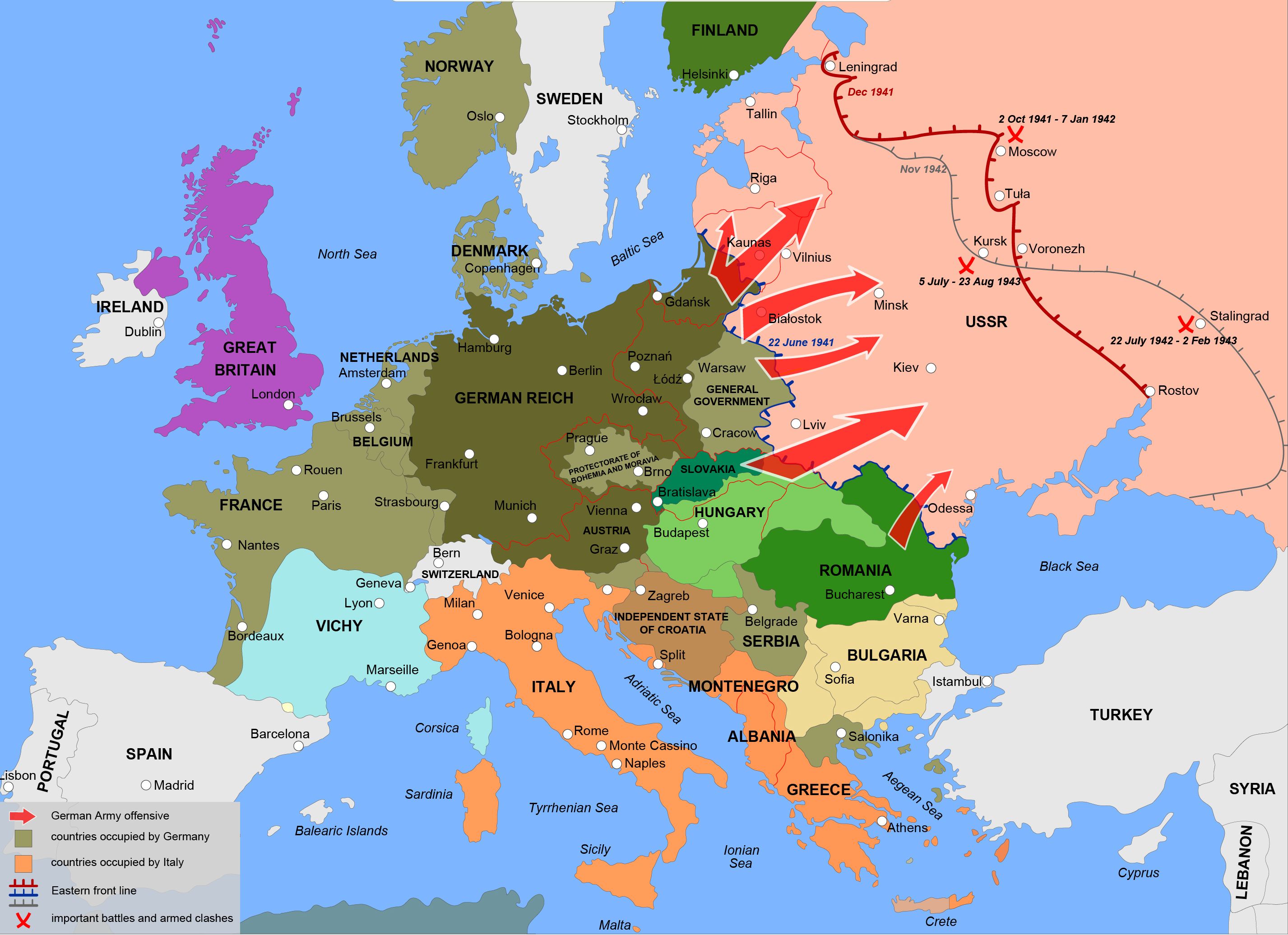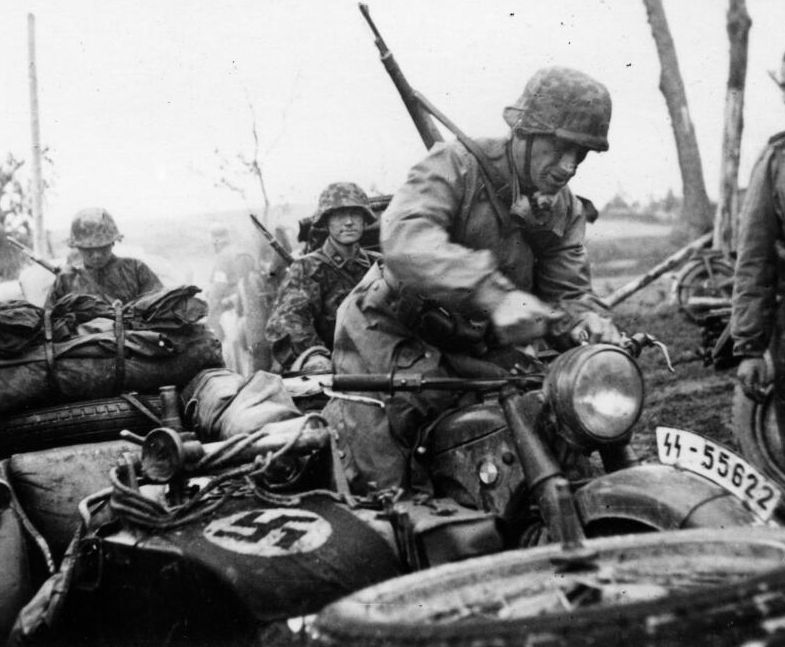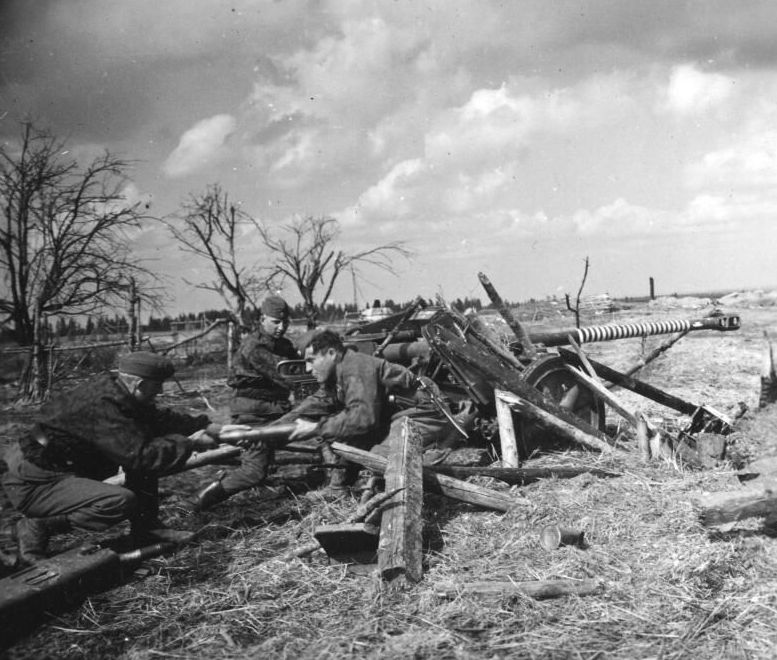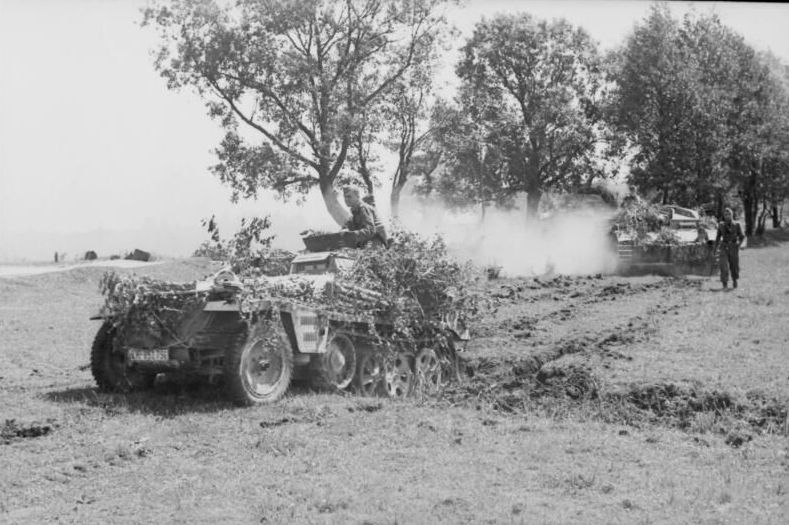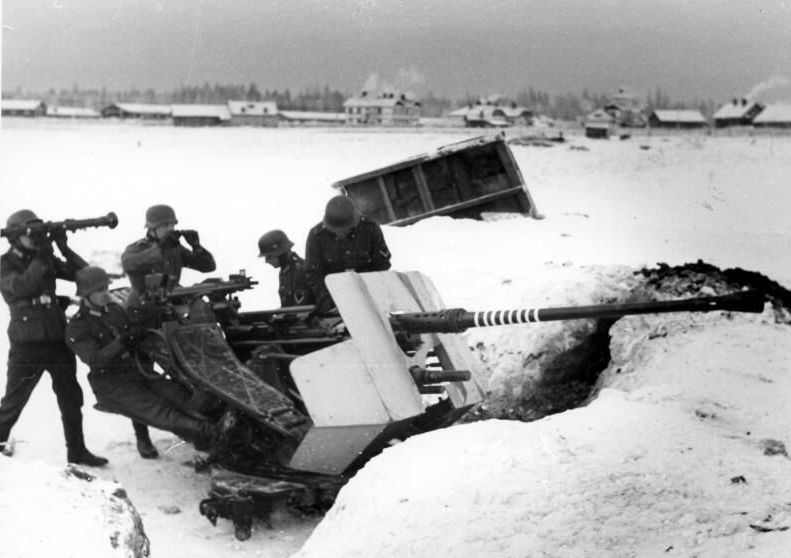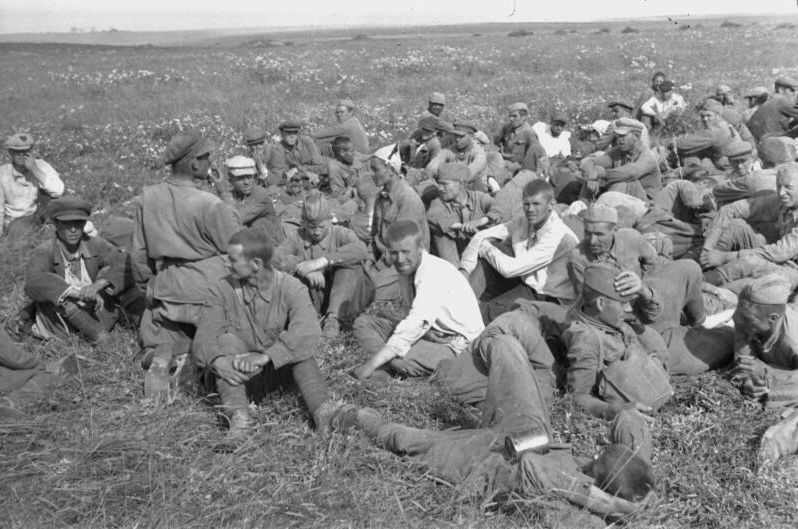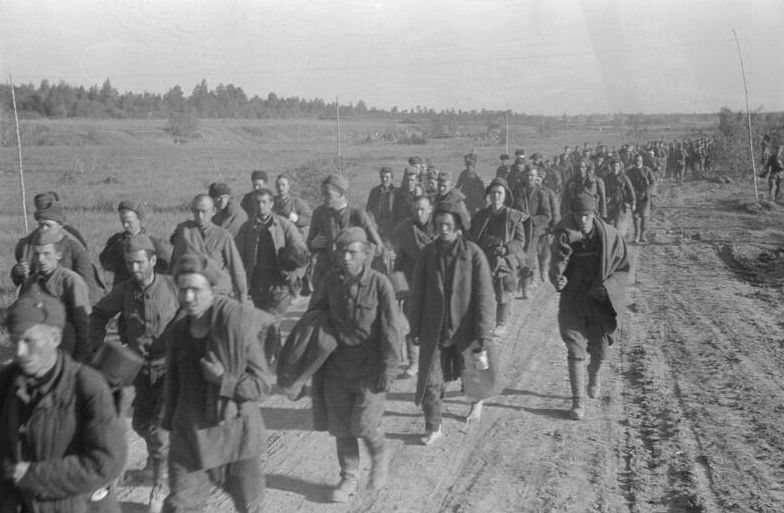On 22 June 1941 the troops of Hitler and his allies invaded the USSR. The surprise attack, with the application Blitzkrieg tactics, whereby enemy frontlines were cut through and outflanked by highly mobile armoured units, brought the German Army astounding successes in the first phase of the campaign. Already in the first months of the war millions of Soviet soldiers were captured. Belarus, Ukraine, the Baltic states and much of western Russia were occupied.
Already in July 1941 the first groups of Soviet prisoners-of-war started arriving in Auschwitz, and they were murdered soon after arrival. In October 1941 a special POW camp was set up as part of Auschwitz concentration camp complex. There the Soviet prisoners-of-war were treated with exceptional cruelty. Out of the 15,000 Soviet POWs held, barely several hundred survived.
The German offensive was finally halted by the Red Army on the outskirts of Moscow in December 1941. In 1942 main thrust of the invading Axis armies was concentrated on occupying the oilfields of the Caucasian republics and outflanking Moscow from the south. This offensive stalled in Stalingrad. The Battle of Stalingrad ended at the start of 1943 with German defeat. In the summer of 1943, the German high command undertook one more attempt to tilt the Russian campaign in their favour. In one of the largest military clashes of the Second World War, the Battle of Kursk, the German offensive was eventually halted and next repelled. This ended the territorial expansion of the Third Reich, which from then on fought only to hold on to its previously acquired territories.
Several thousand civilian citizens of the USSR, mainly from the territories of Belarus, were deported to Auschwitz concentration camp.

